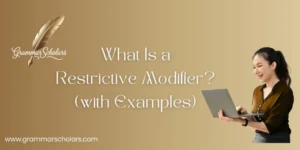Language changes fast, especially in online spaces where a single tweet or text can shape how we write. I’ve seen people, maybe even yourself, type “soo” instead of “so” to stretch emotion or add a playful tone. I’ve probably done it too. Soo vs So has become a common grammar question, especially for writers navigating internet slang and formal English communication. But let’s be clear, “soo” isn’t an official word you’ll find with a reliable dictionary verdict. It’s more of a modern slang expression that’s gone a bit wild on social media.
While it may feel fun and light in casual writing, it doesn’t belong in formal communication or professional messages. That’s where knowing how, when, and exactly to use the right form truly matters.
This short guide clears up the confusion by offering some real examples and smart tips. For instance, use “so” when you’re linking ideas, showing cause, or expressing intensity within proper grammar and rules. Save “soo” for fun chats, memes, or places where tone matters more than correctness. Know that there’s a time and place for both. I’ve helped edit enough posts to understand the balance. It’s all about context, and usage truly depends on your intent. Whether you’re having fun or sticking to proper structure, having the right sense of these words will sharpen your online voice. Now go ahead and dig into your writing with confidence.
Why Are People Confused About “Soo” vs “So”?
The confusion isn’t just about spelling. It’s about context, tone, and correctness. Here’s why:
- “So” is a grammatically correct word used in a wide range of formal and informal contexts.
- “Soo” is mostly used online or in text messages to add emphasis or mimic speech tone.
The problem? People start using “soo” in places where it doesn’t belong– emails, essays, resumes- and that can damage credibility.
Quick Example
✅ Correct: “That concert was so amazing!”
❌ Informal: “That concert was soo amazing!”
Even though both express the same feeling, only one is appropriate for professional writing.
What Does “So” Actually Mean?
Let’s break down what “so” really is, grammatically and semantically.
Definition of “So”
According to Merriam-Webster, “so” is:
“To such a degree,” “in the way described,” or “for this reason.”
It plays multiple grammatical roles, which makes it versatile and essential in English.
Grammatical Functions of “So”
| Function | Usage | Example |
| Conjunction | Connects clauses | “I was tired, so I went to bed.” |
| Adverb | Modifies adjectives or verbs | “She was so happy.” |
| Interjection | Starts a sentence or transition | “So, what now?” |
As a Conjunction
“So” links a cause to an effect.
“The flight was delayed, so we missed the meeting.”
As an Adverb
“So” emphasizes intensity.
“That’s so interesting!”
As an Interjection
Used to steer the conversation.
“So, let’s get started.”
Bottom line: “So” is grammatically correct, flexible, and widely accepted in every kind of communication.
Why Do People Write “Soo”?
The spelling “soo” doesn’t appear in traditional grammar books. So why do people use it?
Because it’s a phonetic exaggeration.
Origin and Evolution
- “Soo” mimics the drawn-out pronunciation of “so” in casual speech.
- It’s often used for emphasis, emotion, or humor in digital communication.
Think of it like a written version of intonation.
Examples in Context
- “I’m sooo tired right now.”
- “That puppy is sooo cute!”
- “Soo… what are you saying exactly?”
In each case, “soo” amplifies tone, but it isn’t grammatically standard.
Is “Soo” a Real Word? What the Dictionary Says
Let’s go straight to the source.
What Dictionaries Say
- Merriam-Webster: “Soo” does not exist as a standalone word (in this context).
- Oxford English Dictionary: No entry for “soo” as a variant of “so.”
- Cambridge Dictionary: Redirects to “so.”
But There Are Exceptions
- Proper Noun: “Soo” refers to Sault Ste. Marie, a city in Michigan and Ontario, is often called “The Soo.”
- Surname: Used in some East Asian cultures (e.g., Sandra Oh’s character, Cristina Yang’s middle name is Soo).
So while “Soo” has real uses as a name or place, it is not a standard English word for emphasis.
“So” vs “Soo” in Real Sentences: A Side-by-Side Breakdown
Let’s compare how each term functions in real-life writing.
| Purpose | Correct (“So”) | Informal (“Soo”) |
| Emphasis | “I’m so excited!” | “I’m sooo excited!” (text/chat only) |
| Reason | “I was late, so I took a cab.” | “I was late, so I took a cab.” (not accepted in formal writing) |
| Transition | “So, what do you think?” | “Soo, what do you think?” (playful tone) |
Takeaway: Use “soo” only when writing casually. “So” is always the right choice for serious communication.
Formal vs. Informal: Why “So” Wins Every Time in Professional Writing
If you’re unsure which word to use, here’s the rule:
When in doubt, go with “so.”
Situations Where “Soo” Is Not Appropriate
- Resumes or cover letters
- Business emails
- School papers
- Legal or academic writing
- Journalism
Why It Matters
Using “soo” in formal writing can make you appear:
- Unprofessional
- Unaware of basic grammar
- Overly casual or unserious
Style Guides Are Clear
- APA, MLA, Chicago Manual of Style: No recognition of “soo” as a real word.
- Grammarly and Hemingway editors will flag “soo” as an error.
When Is It Okay to Use “Soo”?
Despite its lack of official status, “soo” can still be effective when used intentionally.
Acceptable Uses
- Text messages: “Soo… when are we meeting?”
- Tweets, memes, captions: “Soo done with this day. 😩”
- Creative writing: Adding tone or personality
Creative Industries That May Use “Soo”
- Marketing: Headlines or playful brand copy
- Blogging: Conversational blog posts
- Social media management
💡 Case Study: Wendy’s Twitter account often uses exaggerated language like “sooo spicy” to engage younger audiences. It works because the tone fits the platform and target demographic.
Search Trends: How Often Are “Soo” and “So” Used?
Let’s look at real-world data.
Google Trends Snapshot (Past 5 Years)
| Term | Interest Over Time (Global) |
| “so” | Always high–consistent use in every country |
| “soo” | Spikes during meme trends, viral events |
Key Insight: “Soo” is seasonal and reactive. “So” is evergreen.
Search Intent Differences
- People searching for “so meaning” are often learners or writers.
- People searching “soo meaning” are usually asking if it’s “a real word” or wondering about slang usage.
Regional and Cultural Variations
While “soo” is informal, its usage often correlates with demographics and culture.
Most Common Among:
- Teenagers and Gen Z
- U.S. and Canadian English speakers
- TikTok, Twitter, and Instagram users
“Soo” is not a dialect- it’s a digital-age habit.
Final Word: Keep It “So” Unless You’re Being Playful On Purpose
Here’s a rule you can take to the bank:
Use “so” for everything. Save “soo” for play.
Quick Usage Guide
| Use Case | Use “So” | Use “Soo” |
| Formal email | ✅ | ❌ |
| Blog post headline | ✅ | ✅ (playful only) |
| School essay | ✅ | ❌ |
| Instagram story | ✅ or ❌ (depends on tone) | ✅ |
| Legal writing | ✅ | ❌ |
Bonus Resources
- Merriam-Webster Dictionary: So
- Cambridge Dictionary Entry: So
- Grammarly: Common Word Mistakes
- Google Ngram Viewer: So vs. Soo
Downloadable PDF
Soo vs. So – Quick Usage Guide (Include a printable cheat sheet with examples, grammar tips, and a usage table.)
Is “Soo” Even a Word in English?
“Soo” isn’t recognized as a standard word in English dictionaries. It’s a nonstandard spelling, mostly used for emphasis in informal writing or digital communication. In dictionaries like Merriam-Webster or Oxford, “soo” doesn’t appear unless it’s referring to:
- A proper noun (e.g., The Soo Locks in Michigan)
- A surname or place name
If you’re looking for a legitimate, dictionary-backed word, “so” is the one.
What Does “Soo” Mean in Slang or Texting?
In digital slang, “soo” is simply a stylized way of saying “so”– usually to exaggerate emotion or tone.
Common Uses of “Soo” in Slang:
- Excitement: “Soo happy right now!”
- Sarcasm: “Soo mature of you…”
- Dramatic pause: “Soo… what happened next?”
It’s part of internet vernacular, not standard grammar. That makes it fine for social posts but not suitable for formal writing.
So, Meaning in Grammar and Everyday English
“So” plays a big role in English. It acts as:
- A conjunction (joins clauses)
- An adverb (modifies adjectives or other adverbs)
- An interjection (expresses thought or transition)
Examples:
- Conjunction: “He was tired, so he went to sleep.”
- Adverb: “She’s so talented.”
- Interjection: “So, let’s begin.”
This versatility makes “so” essential in writing and speaking.
Common Uses of “So” in Sentences
“So” is used in both written and spoken English to express:
- Results: “I missed the bus, so I was late.”
- Degree: “This is so good!”
- Introductions: “So, where were we?”
Here’s a usage breakdown:
| Function | Example Sentence |
| Cause & Effect | “He was sick, so he stayed home.” |
| Emphasis | “That’s so kind of you.” |
| Conversation Cue | “So, what are your thoughts?” |
It’s one of the most frequently used words in English conversation.
Is “Soo” Proper English or a Mistake?
In formal grammar, yes- “soo” is a mistake.
But in modern informal writing, especially online, it’s often used intentionally. Think of it like this:
Incorrect in grammar. Acceptable in internet culture.
Don’t use “soo” in:
- Academic papers
- Business emails
- Resumes or applications
You can use it in:
- Text messages
Instagram captions - Tweets or memes
Examples of “Soo” in Pop Culture and Media
“Soo” appears often in:
- Memes: “Soo done with today.”
- Hashtags: #sootired #soocute
- Song lyrics or YouTube video titles
Even brands play with spelling for tone.
📝 Example: Wendy’s Twitter often uses exaggerated spelling for comic effect: “Soo much flavor in one bite.”
While it captures attention, it’s not professional English.
“Soo” vs “So” in Formal Writing
Here’s where things get strict.
In formal writing, always use “so.”
Why?
- It’s correct.
- It’s recognized by grammar guides.
- Tools like Grammarly will flag “soo” as incorrect.
Avoid “soo” in:
- Cover letters
- Client proposals
- College essays
- Press releases
Tone and Emotion: Why People Say “Soo” Instead of “So”
People don’t just type “soo” for fun- it serves a stylistic purpose. It mimics how people draw out words when they speak.
“That’s sooooo cool!” (spoken) → “Soo cool!” (written)
This adds:
- Drama
- Emotion
- Voice/personality
Just remember: It’s not about grammar. It’s about vibe.
Soo vs So in Digital Communication
Platforms where “soo” is common:
- TikTok
- Snapchat
When to use “so” instead:
- LinkedIn posts
- Business DMs
- Email newsletters
Here’s a quick chart:
| Platform | Use “So” | Use “Soo” |
| ✅ | ✅ | |
| ✅ | ❌ | |
| ✅ | ❌ | |
| ✅ | ✅ | |
| Blog | ✅ | Optional (depends on tone) |
“So” in Academic and Professional English
“So” is not just useful- it’s essential in academic writing.
How it’s used:
- To link ideas: “So, the results indicate a significant change.”
- To emphasize logic: “So, it can be concluded…”
🧠 Quote from APA Style Guide:
“Transitional words like ‘so’ create coherence between sentences and clarify cause-and-effect relationships.”
In research, essays, and business documents, “so” is a powerful connector.
How to Teach Students the Difference Between “So” and “Soo”
Teaching tips:
- Use real-life examples
- Show social media screenshots
- Compare chat vs. essay style
- Provide a word usage table
Example exercise:
✍️ Rewrite this sentence in formal English:
“I’m soo not okay with this.”
✅ Answer: “I’m not okay with this.”
This builds awareness of contextual tone and correctness.
Why Spelling Matters: “Soo” Can Hurt Your Credibility
Imagine receiving a job application that says:
“I’m soo excited about this opportunity.”
That one extra “o” might seem small, but it can:
- Make you look careless
- Appear unprofessional
- Undermine your message
Linguistic Analysis: What Makes “Soo” Feel Different?
“Soo” adds prosodic features (intonation, stress) to writing. It replicates emotional speech patterns.
From a linguistic view:
- It mimics phonological elongation.
- It’s a form of orthographic play (creative spelling).
- It signals tone more than meaning.
In essence, “soo” is how we write the way we talk.
Should You Ever Use “Soo” in Blogging or Content Writing?
It depends on your brand voice.
If you’re writing:
- A quirky blog post → ✅
- A legal article → ❌
🎯 Pro tip:
Use “soo” sparingly to maintain clarity and credibility.
Brand tone matters
| Industry | Use “soo”? |
| Fashion Blog | ✅ |
| Tech Startups | ⚠️ Maybe |
| Financial Services | ❌ |
| Entertainment News | ✅ |
Conclusion: So vs Soo – Which Should You Use?
Use “so” for:
- Grammar accuracy
- Formal and informal correctness
- Universal communication
Use “soo” for:
- Expressive, digital writing
- Informal chats or posts
- Humor, sarcasm, or emotion
But remember:
🧭 Clarity always wins. If your audience might misunderstand or judge the spelling, stick with “so.”
Conclusion:
When it comes to “Soo vs So,” the difference is crystal clear: “So” is the grammatically correct, dictionary-approved word used across formal, informal, academic, and professional contexts. It’s a powerhouse in English grammar, serving as a conjunction, adverb, and interjection.
On the flip side, “Soo” is a stylized, informal variation that lives mostly in casual texting, memes, and social media captions. While it adds tone and personality, it doesn’t belong in serious writing or professional communication.
Bottom line?
Use “so” when accuracy matters. Use “soo” when you’re trying to be expressive, humorous, or dramatic in a casual context.
✨ Choose clarity over creativity when the stakes are high—but don’t be afraid to get playful when the tone allows.
Frequently Asked Questions (FAQs)
What is the difference between “soo” and “so”?
The word “so” is a legitimate English word used to connect ideas, emphasize meaning, or transition between thoughts. It’s found in all major dictionaries and used across professional, academic, and everyday language.
“Soo,” on the other hand, is a nonstandard, exaggerated version often used online to emphasize tone or emotion. It’s not grammatically correct and shouldn’t appear in formal writing.
Is it okay to use “soo” in social media posts?
Yes! Social media is a casual, expressive space where “soo” is commonly accepted to add drama, humor, or emphasis. Just make sure your audience understands the tone, and don’t overuse it if you’re representing a brand with a serious or professional image.
Can using “soo” instead of “so” hurt your credibility?
It can. In formal, academic, or professional writing, using “soo” instead of “so” may come across as careless or unprofessional. Spelling choices send signals about your attention to detail. Even one extra “o” can change how your message is received.
Does “soo” appear in the dictionary?
Not as a standalone word with a unique meaning. “Soo” might appear as a proper noun (like Soo Locks in Michigan or someone’s surname), but not as a substitute for “so.” No reputable English dictionary recognizes “soo” as a real word with grammatical function.
When should I always use “so” and never “soo”?
Use “so” in the following situations:
- Academic essays
- Business communications
- Resumes and cover letters
- News articles
- Reports or legal documents











